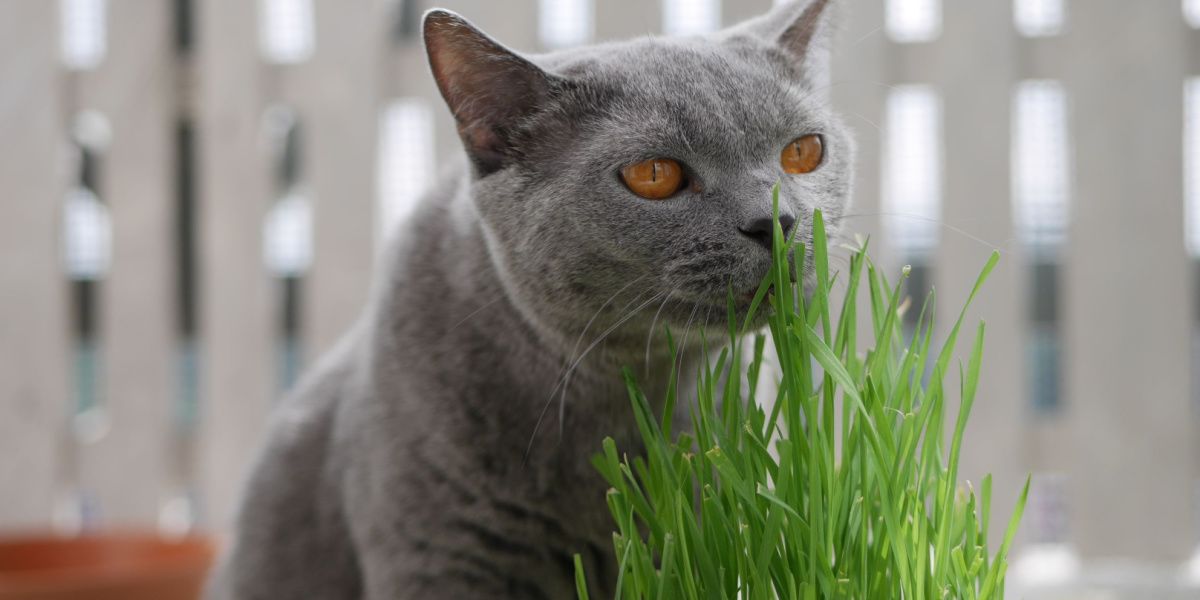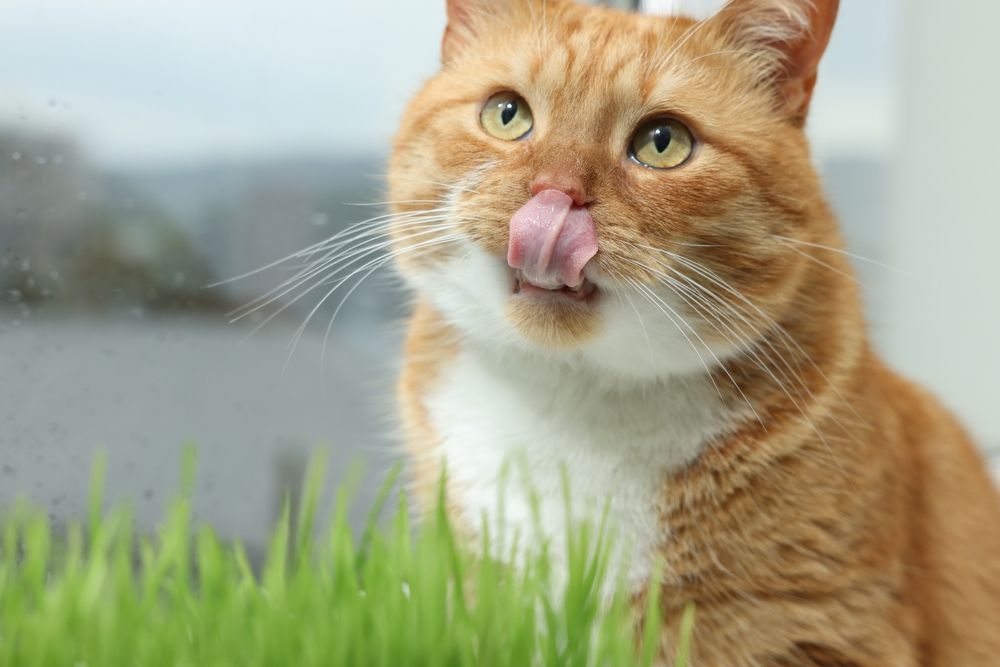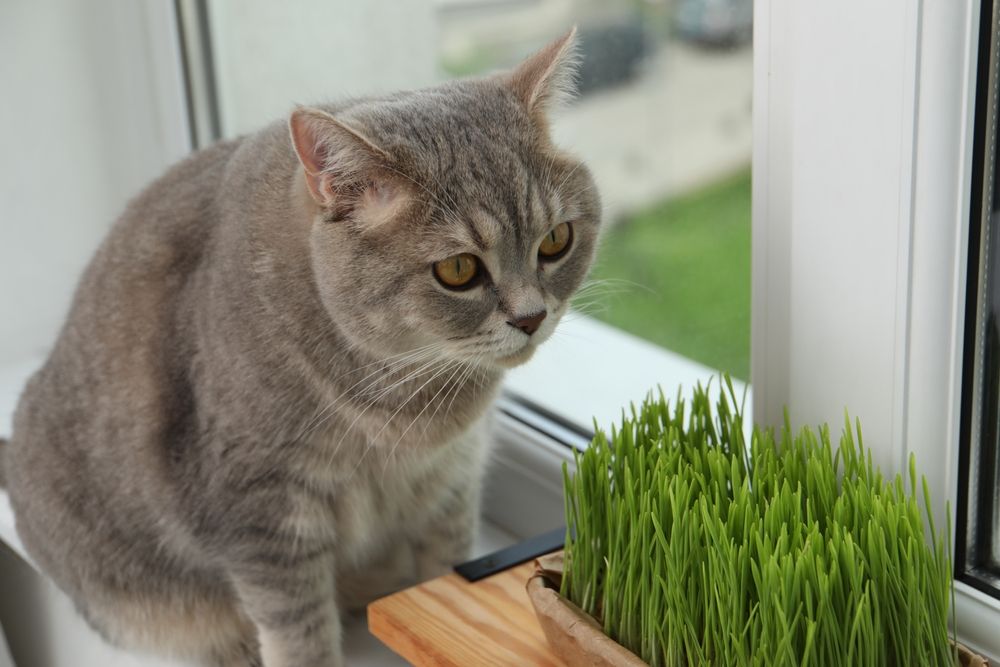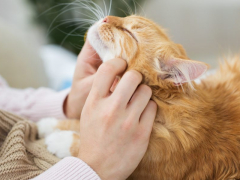
Shutterstock.com
Wheatgrass is the name for a wheat plant before it has the chance to sprout a head of wheat. Wheatgrass is also known as pet grass or cat grass and is different from catnip. It is a safe, nutritious plant that can be fed to cats of any age, breed, and stage of life. Most cats find wheatgrass a fun and enjoyable treat to nibble on, adding variety to their day and diet.
Key Takeaways
Wheatgrass is a type of plant that is fun and safe for cats to eat in small amounts.
Wheatgrass has multiple health benefits and can help to enrich your cat's life.
Consuming too much wheatgrass can cause digestive upset in your cat.
Benefits of Wheatgrass for Cats
Wheatgrass is a source of vitamins A, C, and E. It is a rich source of antioxidants and chlorophyll. Wheatgrass contains beta carotene, essential for good vision and plant proteins. Despite the name, wheatgrass doesn’t contain any gluten, so it is safe for pets with gluten intolerances.
Is Wheatgrass Healthy for Cats?
Wheatgrass is considered a healthy snack, especially when compared to other calorie-dense treats from the pet store. It is a good snack for cats on a weight-loss program because it is low in calories and your cat uses calories in the grazing activity. So it is a win-win for cats trying to shed weight.
In small amounts, wheatgrass adds fiber to your cat’s diet, which is good for cats who struggle with stool quality. Fiber has many health benefits on the digestive tract, such as reducing the number of hairballs your cat gets. Fiber reduces the chances of constipation and conditions such as megacolon in cats.
Wheatgrass provides ample mental stimulation for your cat. This snack adds variety to the day, fills time by eating, and stimulates the senses of touch, taste, and sound. A cat needs both physical and mental stimulation for a happy life, so wheatgrass is an easy and cheap way to boost your cat’s well-being.
How Much Wheatgrass Should My Cat Eat?

Shutterstock.com
Try to stick to a small amount each day, no more than a few blades or around five to ten minutes of nibbling on the wheatgrass. This allows time for your cat to get all the enjoyment and nutritional benefits of cat grass without the side effects.
If your cat is a wheatgrass fan, you may find they are prone to consuming a little too much daily. A large amount of wheatgrass can cause tummy upsets, as cats are predominantly obligate carnivores and struggle to digest large volumes of plant-based material.
Overeating wheatgrass can be a sign of boredom in cats, so make sure your cat has a good variety of toys and puzzle feeders and spends time with people for company. This can help keep your cat occupied and prevent overeating of wheatgrass.
If your cat is eating a lot of wheatgrass and still complains of being hungry, they may not be on the right cat food for them. Get your cat checked to rule out health conditions such as diabetes, then your vet can suggest a suitable diet. Cats who are underfed or fed the wrong type of diet can have nutritional imbalances that can be detrimental to their long-term health.
What if My Cat Won’t Eat Wheatgrass?
That’s okay! Wheatgrass is not essential for good health, and there are other varieties of edible grasses you can try instead. Give your cat at least two to three weeks to get used to the grass being in your home before admitting they are completely disinterested. Do not push their head or face into the grass—this can create a fear association with the grass. Not all cats enjoy eating grass, so if your cat doesn’t like it, think of other ways to make their day fun instead.
Pruning grass and juicing wheatgrass to feed your cat is not recommended because there is the potential to overfeed your cat causing digestive system upset. Cats also tend not to like the taste of juiced wheatgrass.
Where Can I Get Wheatgrass From?
You can feed homegrown or storebought wheatgrass to your cat. They both have the same health benefits. You can grow wheatgrass seeds and have the grass as small houseplants around the home. This adds an extra level of fun for your cat since the pots can be moved regularly for your cat to hunt for the pot.
You can purchase pregrown grass from pet stores or online retailers such as Amazon. If you are not naturally green-thumbed, purchasing a growing kit may be a good way to get your confidence around growing wheatgrass up. Growing wheatgrass is an easy and simple process and cat owners can enjoy the benefits of plant ownership too.
How to Grow Your Own Cat Friendly Wheatgrass

Shutterstock.com
Your wheatgrass will need indirect sunlight and a daily misting of water. Its ideal temperature is 60–75 degrees Fahrenheit. It is a hardy plant and easy for the beginner grower. If growing from seeds, you will notice shoots around the one-week mark after planting.
If your cat doesn’t eat the grass regularly, you will need to trim it with gardening scissors to avoid it sprouting heads of seed. The ideal length is 3–4 cm and you should not let your cat nibble on the plant when it is less than 2 cm in length for the plant to remain healthy long term. Having multiple pots of wheatgrass allows you to rotate them. Let your cat chew on one pot while the others regrow.
When growing or tending to your cat’s wheatgrass, do not use pesticides or fertilizers as these can be toxic to cats. It’s also worth considering what other plants you have in your home, as cats who learn to nibble on wheatgrass may be tempted to try other plants around your home. This can cause problems if those plants are toxic to cats, such as lily plants. If you are unsure if a plant is toxic to cats or not, always check with a veterinarian who will be happy to help advise on types of cat-safe plants for your home.







